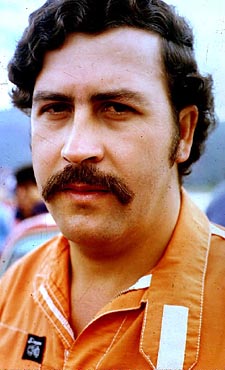 Title: Killing Pablo
Title: Killing PabloAuthor: Mark Bowden
Publisher: Peguin Books
Pages: 285
Genre: Non-fiction
Pablo Escobar, referred to as the World's Greatest Outlaw, arguably was the richest, most successful drug lord to have ever lived. His career began in the early to mid 70's while Pablo was in his 20's. By 1976, Escobar was the unofficial king running drugs from the jungles in the hills around his hometown of Medellin. Rising to power through merciless killings, Pablo tried to portray himself as the south American Robin Hood. With the support of the local police and populace, he rose to an unimaginable rank of power. In 1989, Forbes magazine declared Pablo to be the 7th richest man in the world.
By the late 80's Pablo had become a sort of drug war symbol. The US offered to Colombia manpower and state of the art assistance in tracking and eliminating the man. The majority of the book follows the CIA and the Colombian federal government in their 16 month manhunt for the drug lord. The search took many twists and turns as they tracked the man through mountainous jungle terrain and neighborhoods of sometimes violent Escobar sympathizers. In Medellin, to many, Pablo was the law. They were a region within a country, but with little loyalty to that country.
Basic law enforcement was very weak in the mountainous jungle region of Medellin It was a forgotten region of Colombia populated by mostly poor natives. The law that takes precedence is the law that it is enforced. It is possibly reminiscent of the US southwest in the 1880's and 90's. Pablo was able to enforce his version of law in Medellin and become its unofficial dictator and self entitled protector. Cocaine grew in abundance in the region. The cocaine being exported to meet the increasing demand in the US brought billions to the region. The combination of Pablo's position as kingpin and the high demand of coca propelled Pablo to the title of World's Greatest Outlaw and drug war symbol.

No comments:
Post a Comment